Have you ever wondered about the best ways to maintain your tonometer efficiently, ensuring its durability and accuracy in readings? Well, you’re in the right place! In this comprehensive guide, we will take you methodically through the steps and procedures necessary to keep your tonometer in optimum condition. Understanding your tool’s needs and providing the correct maintenance can extend its life span, improve its functionality, and possibly avert costly repairs or replacements in the future.
You see, your tonometer is not just any healthcare device; it’s a crucial link in the chain of eye care, helping detect and monitor a range of ocular conditions. Hence, its consistent and faultless performance is incredibly important.
But fret not! This guide is here to ensure that your tonometer is always ready and reliable when you need it. We will delve into the nitty-gritty of cleaning, storage, regular checks, and minor repairs, arming you with the knowledge to keep this vital tool in pristine condition – it’s easier than you might think!
Handheld tonometers like the Tono-Pen XL, Tono-Pen Avia, and iCare devices are designed for ease-of-use with hygiene in mind. Each comes with single-use tip covers or disposable probe tips, making them a practical choice in preventing cross-contamination and the transmission of infectious diseases. Yet, even these easy-to-maintain devices need periodic checks and cleaning to ensure efficiency and accuracy. New tonometers should be checked biannually in the first year, while those more than a year old need your attention every month.
The risk of transmission can rear its ugly head if the tonometer tips aren’t adequately disinfected. Safe and aseptic applanation requires sound disinfection techniques to minimize both the risk of infection and damage to the tonometer tips. Sure, diluted bleach is effective at cleaning, but bear in mind – it has a well-documented history of damaging tonometer prisms.
Therefore, best practices for disinfection of the reusable prism recommend a thorough wiping of the tonometer tip, followed by a short soak in 10% bleach for about 5 minutes. After the bleach has done its job, it’s time to give it a generous rinse with water. To prevent any surprises during operation, always inspect for cracks prior to use using 16x magnification on a slit lamp.
However diligent we may be with our disinfection regimen, time takes its toll on all things, and tonometer tips are no exception. For the sake of safety and accuracy, consider replacing reusable tonometer tips after 2 years of use or at the manufacturer’s expiration date, whichever comes first. Remember, when it comes to your tonometer’s performance, cleanliness and functional excellence are not mutually exclusive—they go hand in hand.
When it comes to frequency of checks and maintaining the tip’s optimal condition, it largely depends on the tonometer’s age. If your tonometer is a fresher model, perhaps less than a year old, we recommend a biannual check-up. However, if it has celebrated its first birthday, shift your routine inspections to a monthly schedule. Remember, consistent check-ups help ensure accuracy and avoid hitches during the usage.
Disinfection, a paramount aspect of maintaining a tonometer, requires a proper technique to reduce potential damage to your valuable tool. Diluted bleach, recommended by experts, is effective indeed. However, your application needs to be measured—aggressive, overzealous disinfection is as harmful as negligent cleaning. Thus, approach this operation strategically. Soak your tonometer tip in a 10% bleach solution for five minutes, fundamental to yielding optimal results.
However, soaking alone won’t quite cut it. To ensure a safely sanitized tonometer, follow your soaking session with a thorough rinse under water. Also, prior to use, inspect for any potential prism damage or cracks under a 16x magnification on a slit lamp. Refined as these cracks may be, their implications on readings can be substantial.
| Disinfecting Step | Description | Importance |
|---|---|---|
| Cleaning | Wiping the tonometer tip clean before soaking. | Prevents the spread of infectious diseases. It also helps to make disinfecting more effective. |
| Soaking | Immerse the tonometer prism in a 10% bleach solution for about 5 minutes. | Eliminates any microscopic organisms that may reside on the tonometer tip. |
| Rinsing | Rinse thoroughly under clean water to remove traces of bleach. | Ensures all the bleach, which could potentially harm the eye, is removed. |
| Checking | Inspect for cracks or damages under a 16x magnification on a slit lamp. | To ensure accurate readings and to prevent injury to the patient. |
And while we are on the topic of safety and sanitation, it’s noteworthy that handheld tonometers such as Tono-Pen XL, Tono-Pen Avia, and iCare devices come equipped with disposable probe tips or single-use tip covers. These not only maintain hygiene standards but also help counter the risk of cross-contamination and transmission of inious diseases.
There is a compelling dialogue in the medical world surrounding the usage of reusable and disposable tips. Some physicians lean towards reusable tips, driven by the economic advantage and scepticism towards the accuracy of disposable tips. While frugal, remember that reusable tips warrant a rigorous disinfection regime. Irrespective of your preference, maintaining the cleanliness and sterility of your tonometer tip is crucial—you wouldn’t want to turn this valuable tool into an inadvertent agent of disease transmission.
Fortunately, your arsenal of disinfection techniques can be robust and readily applied. Renowned handheld tonometers, such as Tono-Pen XL, Tono-Pen Avia, and iCare devices offer the advantage of disposable probe tips or single-use tip covers. This ingenious solution serves to deter cross-contamination and hinder the spread of infectious diseases. Even so, it’s crucial to retain your vigilance to avoid contamination, particularly when dealing with patients suspected to have, or confirmed with, prion diseases. The Ophthalmic Technical Assessment (OTA) proactively endorses this safety precaution.
| Tonometer Model | Type of Tips | Notable Feature | Recommended Disinfectant |
|---|---|---|---|
| Tono-Pen XL | Disposable / Single-use | Ease of use | Diluted Bleach |
| Tono-Pen Avia | Disposable / Single-use | Avia VET for Animals | Alcohols, Hydrogen Peroxide |
| iCare Devices | Disposable / Single-use | No need for anaesthesia | Diluted Bleach, Alcohols |
Are you unsure about your disinfection regimen for reusable tips? Don’t worry; we’ve got your back. A safe and sterile applanation mandates meticulous disinfection to restrict harm to the tonometer tips. While diluted bleach has proven effective, it’s essential to remember that all disinfectants inflict tonometer prism damage to some degree. A valuable best practice involves wiping the tonometer tip clean, followed by a soak in 10% bleach for a span of 5 minutes. Once thoroughly rinsed with water, inspect the tip for any cracks under 16x magnification on a slit lamp before putting it to use. This step-by-step approach safeguards the integrity of your reusable tip, ensuring its longevity while maximizing patient safety.
It might beg the question: regardless of the meticulous care given, how long should a reusable tonometer tip be in circulation? Veterans Affairs Medical Centers endorse a firm policy on this. The guidelines entail disposing of reusable tonometer tips after 2 years of use, or according to the manufacturer’s expiration date—whichever comes first. These measures are adopted to uphold the highest safety standards, serving to protect both you and your patients.
Amidst rising concerns over disease transmission, a novel alternative is gaining traction—disposable prisms. With a convincing cost-benefit analysis in their favor, the tide is turning towards disposable prisms, which offer both convenience and an additional layer of safety. Yet, the decision remains with you, the practitioner. Whether you gravitate towards reusable or disposable, diligent maintenance is the key to an efficient and safe tonometer.
| Features | Reusable Prisms | Disposable Prisms |
|---|---|---|
| Cost-effective | Yes | Varies |
| Requires Disinfection | Yes | No |
| Risk of Disease Transmission | Higher if not properly disinfected | Minimal |
| Ease of Use | Requires careful handling during disinfection | Ready to use |
1. What are disposable prisms and why are they important? Disposable prisms are single-use prisms used with handheld tonometers to measure intraocular pressure. These are vital as they help prevent cross-contamination, thus reducing the risk of transmitting infectious diseases between patients.
2. How reliable are disposable prisms compared to reusable ones? Studies have shown that intraocular pressure (IOP) measurements using disposable prisms correlate closely with measurements taken using reusable Goldmann applanation tonometers (GAT) prisms. In effect, disposable prisms offer both safety and reliable results.
3. If I continue to use reusable prisms, what disinfectant should I use? There are different disinfectants for tonometer prisms including alcohols, hydrogen peroxide, and bleach. However, please consider that all disinfectants have been known to cause damage to the prism surface. Following disinfection, the prism should be thoroughly rinsed and checked for cracks before use.
4. Can tonometer tips transmit diseases even if we disinfect them regularly? Yes, if not disinfected thoroughly and accurately, tonometer tips can be a source of disease transmission. That’s why the disinfection process is crucial and needs to be performed with a keen attention to detail.
5. When should I consider using disposable prisms? The Ophthalmic Trauma Association (OTA) suggests using disposable prisms or tip covers when seeing a patient with suspected or confirmed prion disease, in which case cross-contamination is a substantial risk.
It’s clearly essential to maintain the hygiene of your tonometer whether you choose to use reusable or disposable tips. Armed with the right knowledge and best practices, it’s straightforward. Ensure you remember to disinfect frequently, check your equipment for wear and tear, and handle your disposable tips with care to prevent contamination.
Should you find yourself uncertain about the best kind of tip to invest in or how to maintain your tonometer, consult with the professionals. At IKISSTC, we have a team of specialists available to advise you on the right products for your needs and give you comprehensive instructions on maintenance practices. Get in touch with us today, and we’ll help you protect your patients and your equipment effectively.
VISIT OUR SHOP
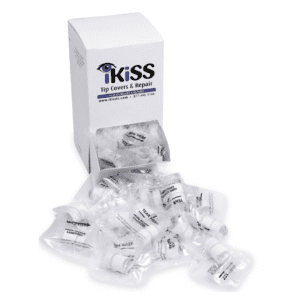
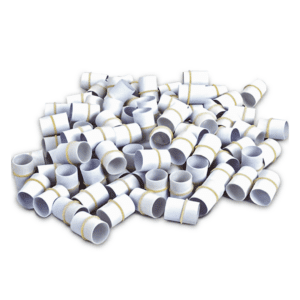
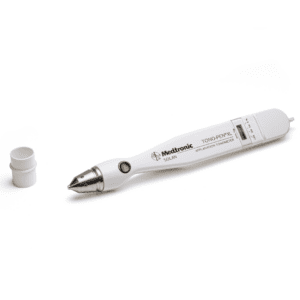
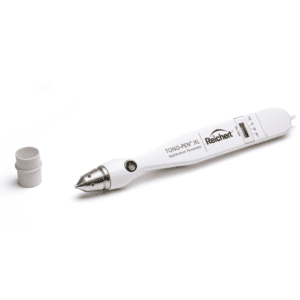
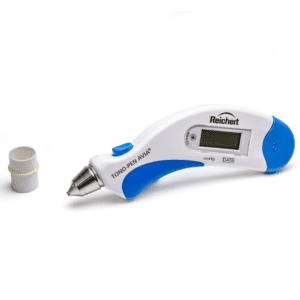
iKiSS is the go-to provider for top-quality refurbished Tono-Pen® Tonometers, Tono-Pen AVIA® Tonometers, Slit Lamps, and Phoropters, offering substantial savings of up to 40%.